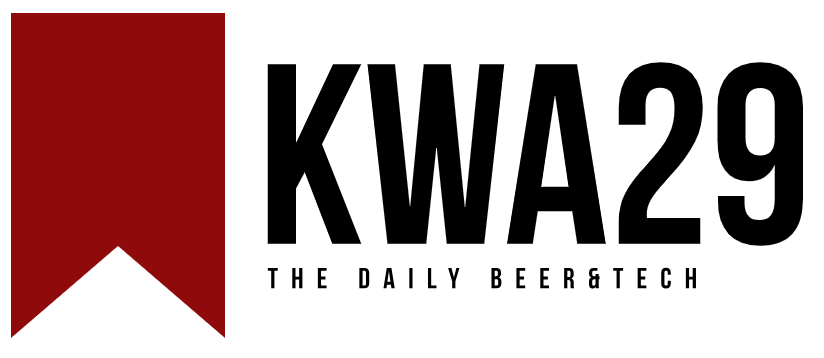Product Design Review at Akeneo aka PDR
Product Design Review at Akeneo (PDR)

Product Design Review at Akeneo (PDR)
What is a PDR?❓
Product Design Review (PDR) is a mandatory step in developing products and features at Akeneo, a leading Product Information Management (PIM) solutions provider. The product design team presents their work to key stakeholders for feedback and approval during the PDR.
PDR aims to ensure that the product design is aligned with the company’s strategic goals, the product roadmap, and most importantly, the customers’ needs. This is achieved by gathering feedback from different departments, including sales, customer success, and development.
PDR is typically conducted in a collaborative and transparent environment, where all stakeholders are encouraged to share their opinions and ideas. The feedback received during PDR is then used to refine the product design and ensure that it meets the company’s high standards for quality, usability, and customer satisfaction.
In summary, PDR is a critical part of Akeneo’s product development process, helping to ensure that the company’s products are designed with the customer in mind and meet the market’s needs.
As our organization expands its product offerings and teams, we increasingly face complex challenges. In some cases, scoping the problem or solution, upfront preparation, or distinguishing between problem and solution studies may present difficulties depending on the context, subjects, and teams involved. These challenges often result in reactive efforts, leading to unclear responsibilities, unpleasant surprises, inefficiencies, and flawed work experiences. However, it is essential to note that these adverse outcomes are not inevitable.
To achieve the highest level of success, we must adopt Best in class 🥇 training and practices. To this end, we have developed a product practice playbook that provides clear guidelines for defining and validating problems and solutions. Our ultimate goal is to create more user and business value for all team members.
One of the critical components of our product practice playbook is the Product Design Review (PDR) process, a validation process that a committee conducts. While we are still iterating to improve this process, it will help us achieve our goals and overcome our challenges.
Idea💡
It is essential to consider various perspectives to explore and understand the new idea or topic fully. By viewing the viewpoints of customers, company strategy, partners, and competitors, a more complete understanding of the problem can be gained. Specifically, gaining a deep understanding of the needs and motivations of customers is crucial to developing practical solutions.
Furthermore, the product manager needs to have a strong point of view, as this will help guide the decision-making process and ensure that the team is moving in the right direction. However, it is also essential for the product manager to remain open to feedback and new information, as this can help refine and improve their point of view.
Data analysis can provide valuable insights to inform decision-making and guide the development of practical solutions. By collecting and analyzing relevant data, product managers can better understand customer behaviors and preferences, identify trends, and make informed decisions based on data-driven insights.
Think and Dig into the Problem ⛏
To become a domain expert, you should start by conducting extensive research. This can be done by reading books, and articles, and attending seminars related to the topic. Additionally, you should be able to communicate it to internal and external stakeholders effectively. This can be achieved by creating presentations, participating in meetings, and writing reports.
Expand beyond one source to gather as much data as possible. You can start by collecting ideas, data, and feedback from teammates. This can give you a broader view of the issue and help you identify areas that need improvement.
Finally, at this stage, we should refrain from discussing solutions. It is important to first gather all the necessary information and data before jumping into solutions. This can help ensure that the solutions we come up with are effective and address the root cause of the issue.
Validation of the Problem (PDR-1) ☑
📒 DELIVERABLE: “Why and What?” (PDR-1)
We are utilizing a pre-designed format incorporating mandatory sections, each of which plays a crucial role in conveying the necessary information in an organized and comprehensive manner. By adhering to this template, we ensure that all the relevant sections are present and accounted for, leaving no room for confusion or ambiguity. While the template may seem limiting initially, it provides a solid foundation for building and expanding, tailoring each section to fit our specific needs and requirements. Through careful consideration and attention to detail, we can ensure that each section is given the attention and depth it deserves, resulting in an informative and engaging final product.
Exec Summary
We’re starting with the executive summary, briefly describing the problem and opportunity. Thinking about a summary or an “elevator pitch” should be straightforward enough if you only have less than a minute to expose it with a problem description, goals, main use case, and success measures.
We could also use a qualitative feature map for executive people with target population (description and size), user and business value (impact, importance, frequency)
Context
This section provides important context. To fully understand the topic at hand, it is crucial to understand the various factors that contribute to it. One way to achieve this is by using concrete examples, which can help to illustrate key concepts and ideas.
Why is the problem worth solving?
This is where you can provide a detailed account of the storytelling, user, and market research findings. It’s important to showcase the impact of these findings on the OKRs, and how they align with the company’s goals. In addition, it would be helpful to discuss the expected benefits of implementing these findings and how they meet the company’s target outcomes as measured by HEART or TARS success metrics. By including a comprehensive analysis of these aspects, we can better understand the potential impact these findings could have on our business and the value they can bring to our customers.
Usually, we’re using the below format:
As (target user) When I (the use case) Matters the most to me (the need) But I encounter (impediment, the problem) So that I have to (workaround, solution).
Then, the product manager presents and shares the problem with the team. Anyone on the team must have a clear overview of the problem, why we want to answer this problem, what are the expected benefits and outcomes. Once shared, the solution co-design starts, especially involving the lead dev and the UX designer. The product leader helps and supports the product manager in the preparation and the engineering manager supports the team in crafting a great solution and trustable plan.
Validation of the Solution (PDR-2) ☑
🗺 DELIVERABLE: “How and When?” (PDR-2)
At this stage, the goal is to craft a clear plan of what will be done, how it will work, and the problem. The template must contain to be validated:
- Scope of the solution
- Mockups of the solution (aligning with the design strategy of leveling up practices + consolidating everyday experiences amongst features/products)
- Data analysis and parameters of scale if any
- The architecture of the solution and API impact
- Information Security impact analysis
- Risks&mitigation, spikes if needed (iterative approach in mind, to be able to deliver the first chunks of business value without creating a tunnel effect, optimizing the time to value (small green arrow on the planning slide to explain when each version/slice of value goes to production)
- Estimations and plan (planning & battle plan)
After validating the solution, the development process can kick off and be incorporated into the Objectives and Key Results (OKRs). This involves identifying the necessary resources, planning the development roadmap, and establishing key milestones to ensure timely solution delivery.
On the other hand, if the solution still needs to be validated, the Product Manager (PM) and Lead Developer (LD) team go back to the drawing board and thoroughly study the solution. They consider the various feedback from the committee, brainstorm on possible improvements, and explore alternative solutions. Once the revised version of the solution is ready, it is presented to the committee the following week for review and validation.
TA-DA moment 🎉
Congratulations! Your PDR has been validated. Now, it’s time to plan and execute the development and launch of the new feature, ensuring that all aspects of the project are carefully considered and executed with attention to detail. To achieve this, it’s important to gather feedback from all stakeholders and incorporate it into the development process. Once the feature is ready, it should be thoroughly tested to ensure its functionality and effectiveness. And finally, after a successful launch, take a moment to celebrate all the hard work that went into making this project a success! Cheers to a job well done! 🍾





